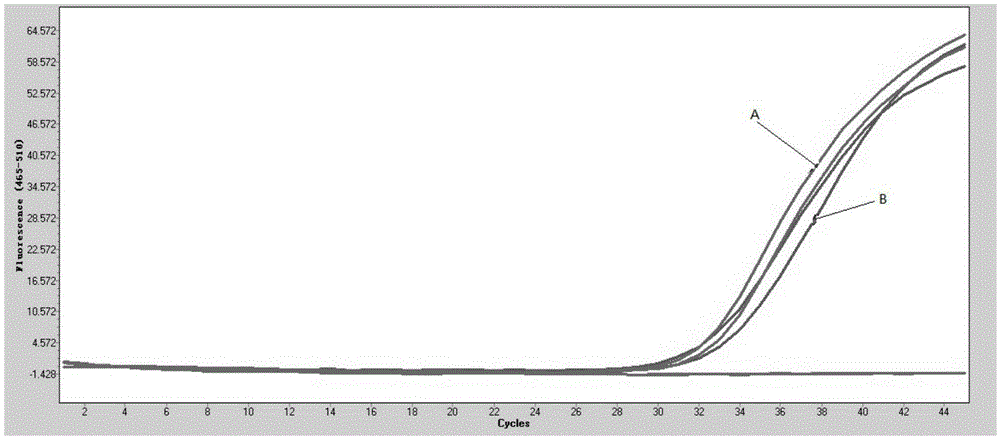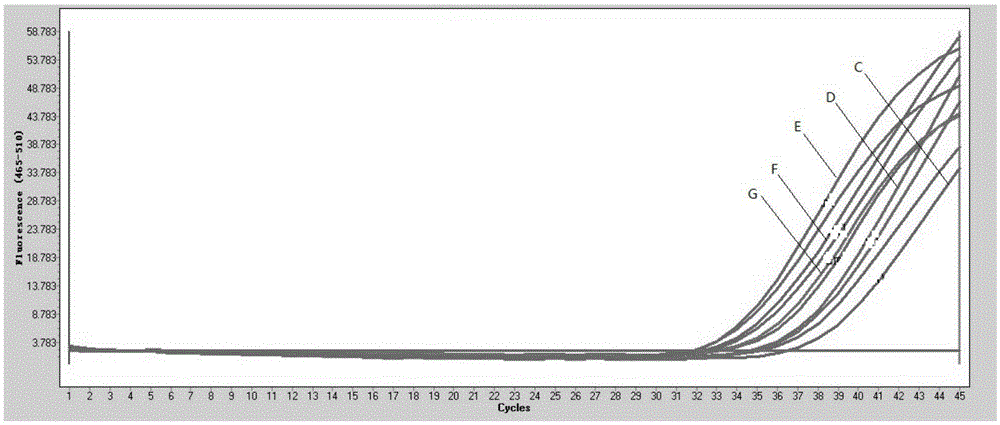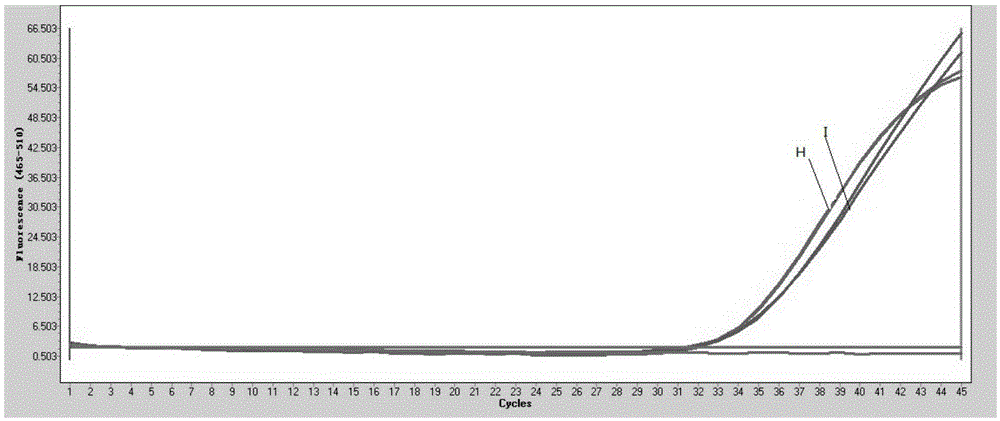Method and kit for extracting free nucleic acid by using paramagnetic particle method
A free nucleic acid and magnetic bead method, applied in the field of nucleic acid extraction, can solve the problems of small sample volume, low extraction efficiency, complicated operation, etc., and achieve the effects of simple operation, improved extraction purity and low free nucleic acid concentration.
- Summary
- Abstract
- Description
- Claims
- Application Information
AI Technical Summary
Problems solved by technology
Method used
Image
Examples
Embodiment 1
[0059] In the method for extracting free nucleic acid by the magnetic bead method in this embodiment, leukocyte-free plasma is used as a sample in this embodiment. The magnetic nanoparticles used are superparamagnetic ferric oxide particles or superparamagnetic ferric oxide particles, and the surfaces of the superparamagnetic ferric oxide particles or superparamagnetic ferric oxide particles are respectively modified by hydroxyl or Carboxyl, and coated with silica. The lysing and combining solution includes 0.5M guanidine isothiocyanate, 0.5% tween20, and 10% isopropanol, and the pH value of the lysing and combining solution is 5; the washing solution includes 0.5M sodium perchlorate and 70% prepared by mixing absolute ethanol, and the pH value of the washing liquid is 5. The eluent is a Tris buffer without DNase and RNase enzymes, and the Tris buffer is Tris-HCl with a molar concentration of 10 mM and a pH value of 8.5.
[0060] The specific extraction method is: add 0.3ml ...
Embodiment 2
[0062] In the method for extracting free nucleic acid by the magnetic bead method in this embodiment, leukocyte-free serum is used as a sample in this embodiment. The magnetic nanoparticles used are superparamagnetic ferric oxide particles or superparamagnetic ferric oxide particles, and the surfaces of the superparamagnetic ferric oxide particles or superparamagnetic ferric oxide particles are respectively modified by hydroxyl or Carboxyl, and coated with silica. The lysis binding solution includes 6M guanidine hydrochloride, 5% SDS, 50% ethanol and 0.5M sodium iodide mixed, and the pH value of the lysis binding solution is 7; the washing solution includes 3M guanidine isothiocyanate and 30 % of absolute ethanol is mixed, and the pH value of the washing liquid is 7. The eluent is a Tris buffer without DNase and RNase enzymes, and the Tris buffer is Tris-HCl with a molar concentration of 10 mM and a pH value of 8.5.
[0063]The specific extraction method is: add 7.5ml of lys...
Embodiment 3
[0065] In the method for extracting free nucleic acid by the magnetic bead method in this embodiment, leukocyte-free plasma is used as a sample in this embodiment. The magnetic nanoparticles used are superparamagnetic ferric oxide particles or superparamagnetic ferric oxide particles, and the surfaces of the superparamagnetic ferric oxide particles or superparamagnetic ferric oxide particles are respectively modified by hydroxyl or Carboxyl, and coated with silica. The lysing solution is prepared by mixing 4M guanidine isothiocyanate, 3% tritonX100, 30% isopropanol and 2M sodium perchlorate. The pH value of the lysing solution is 6; the washing solution includes 1.5M guanidine hydrochloride It is prepared by mixing with 50% absolute ethanol, and the pH value of the washing solution is 6. The eluent is a Tris buffer without DNase and RNase enzymes, and the Tris buffer is Tris-HCl with a molar concentration of 10 mM and a pH value of 8.5.
[0066] The specific extraction metho...
PUM
 Login to View More
Login to View More Abstract
Description
Claims
Application Information
 Login to View More
Login to View More - R&D Engineer
- R&D Manager
- IP Professional
- Industry Leading Data Capabilities
- Powerful AI technology
- Patent DNA Extraction
Browse by: Latest US Patents, China's latest patents, Technical Efficacy Thesaurus, Application Domain, Technology Topic, Popular Technical Reports.
© 2024 PatSnap. All rights reserved.Legal|Privacy policy|Modern Slavery Act Transparency Statement|Sitemap|About US| Contact US: help@patsnap.com










